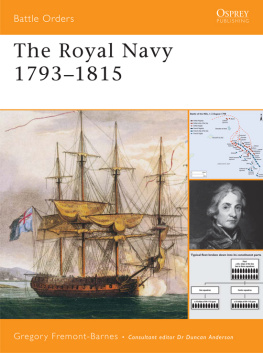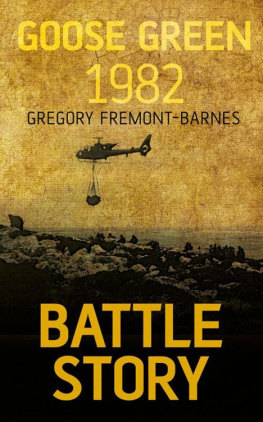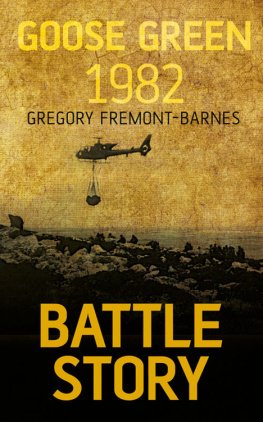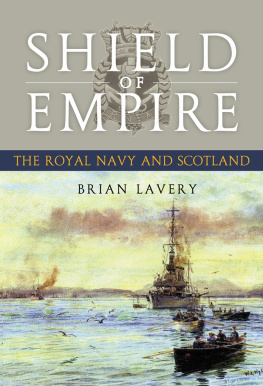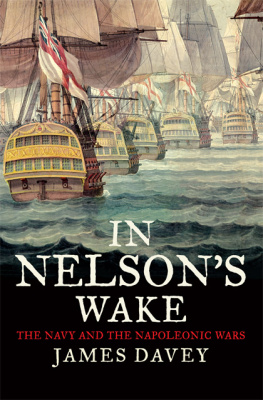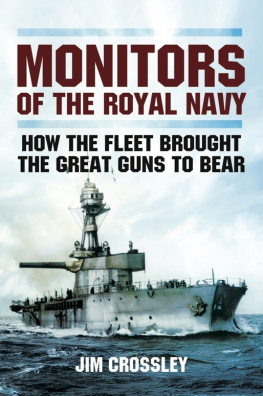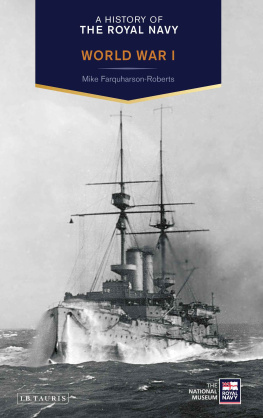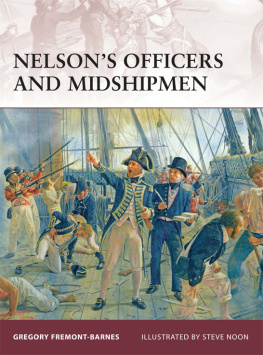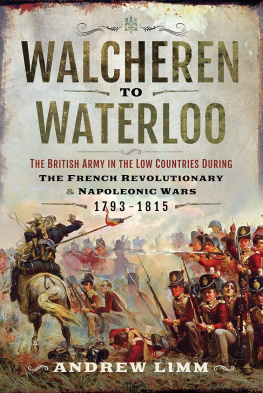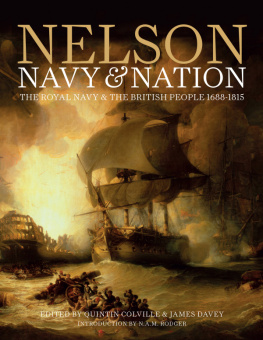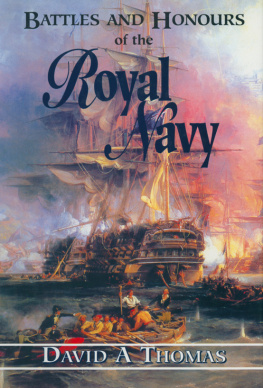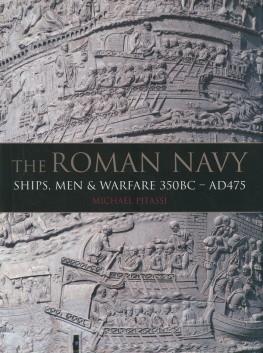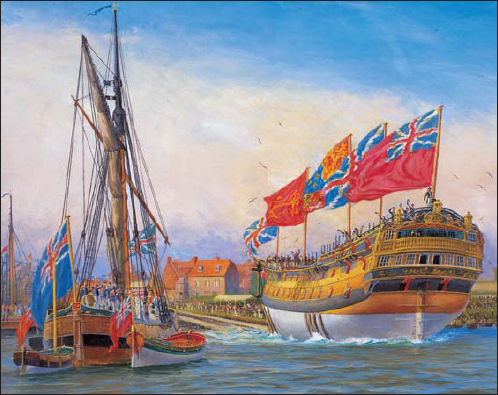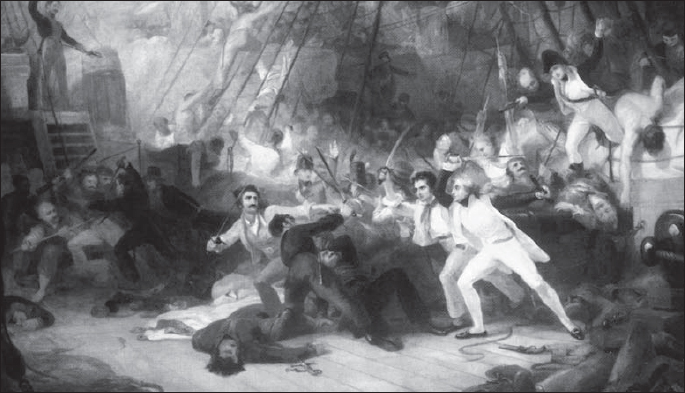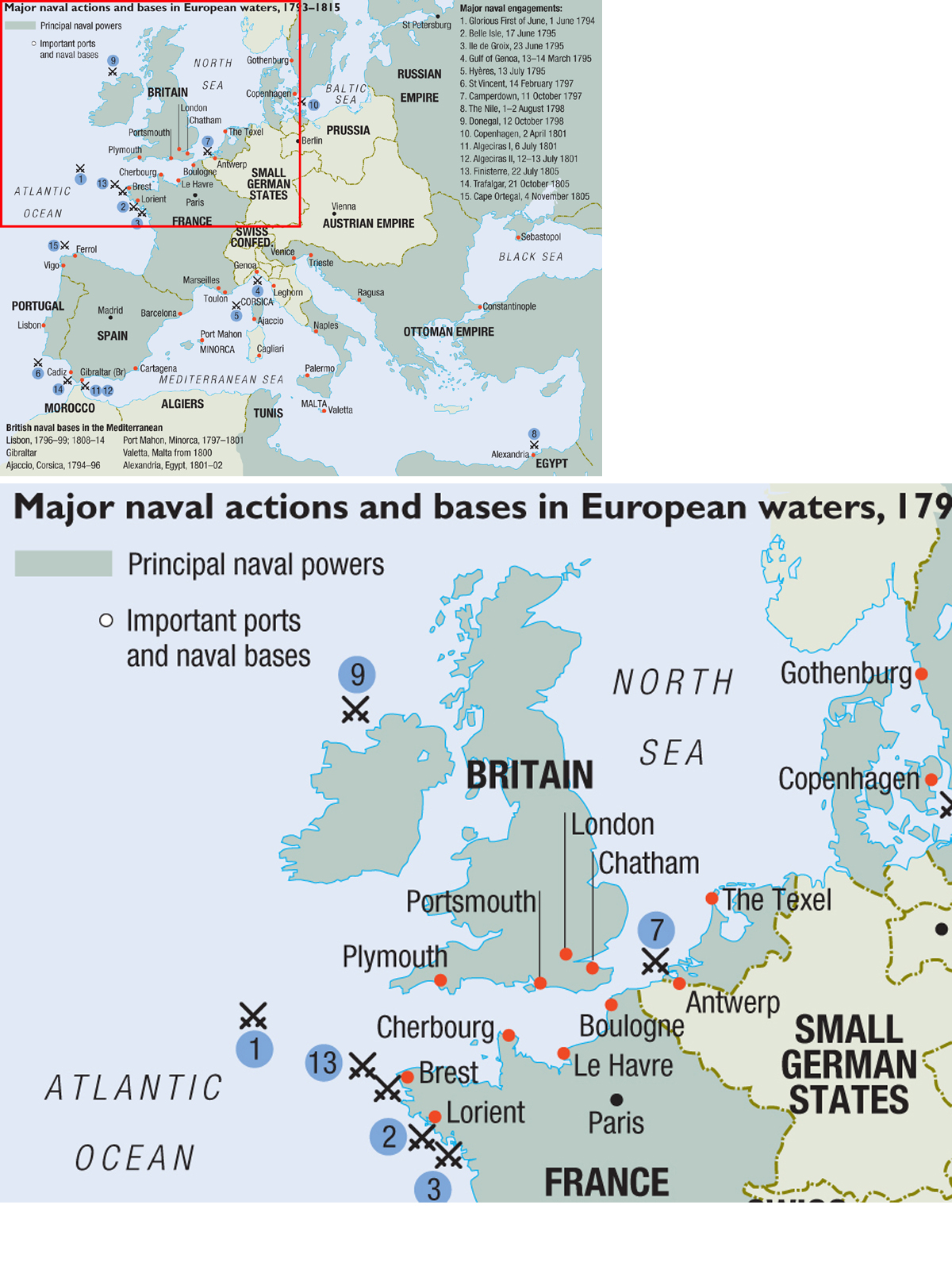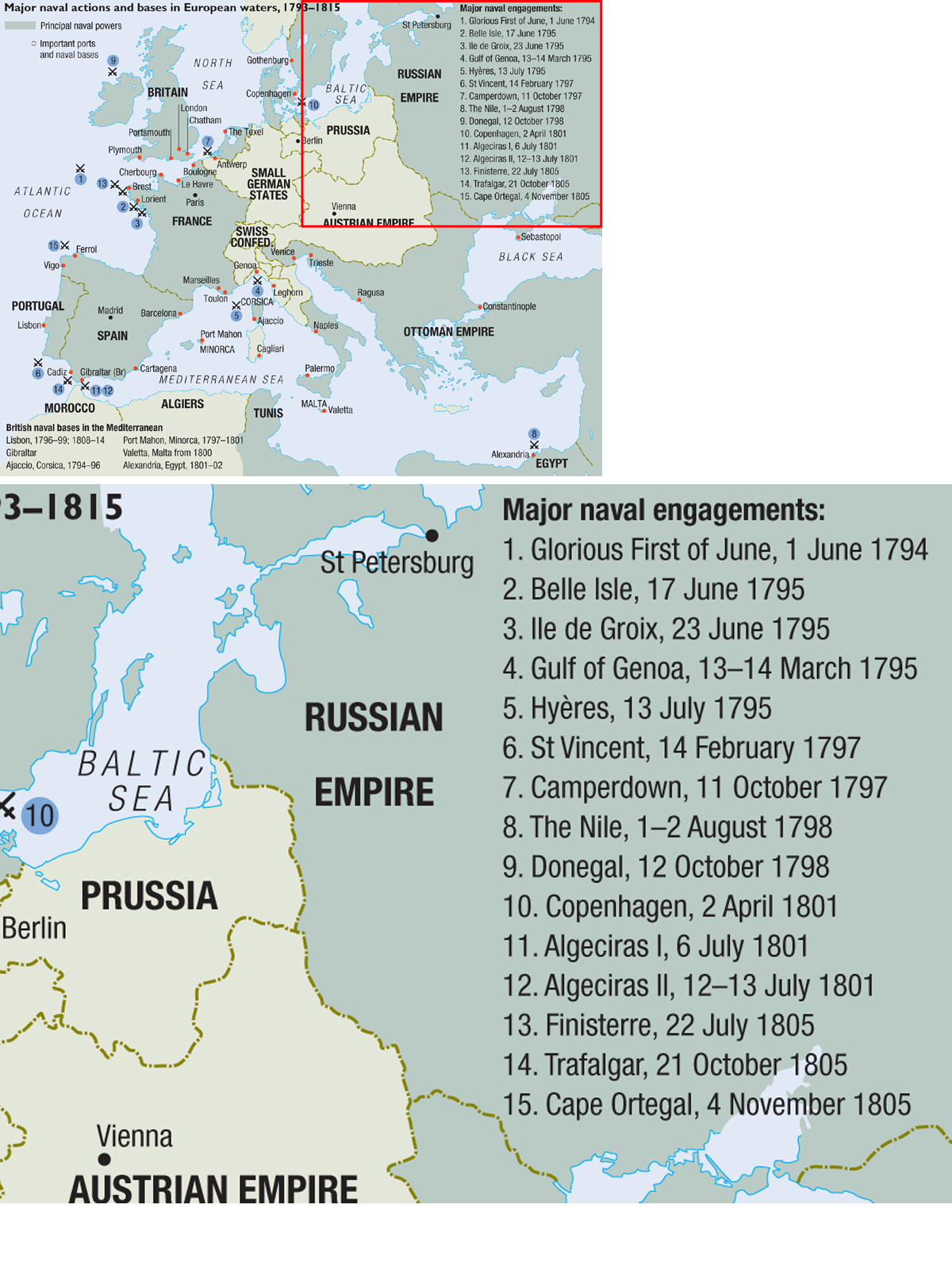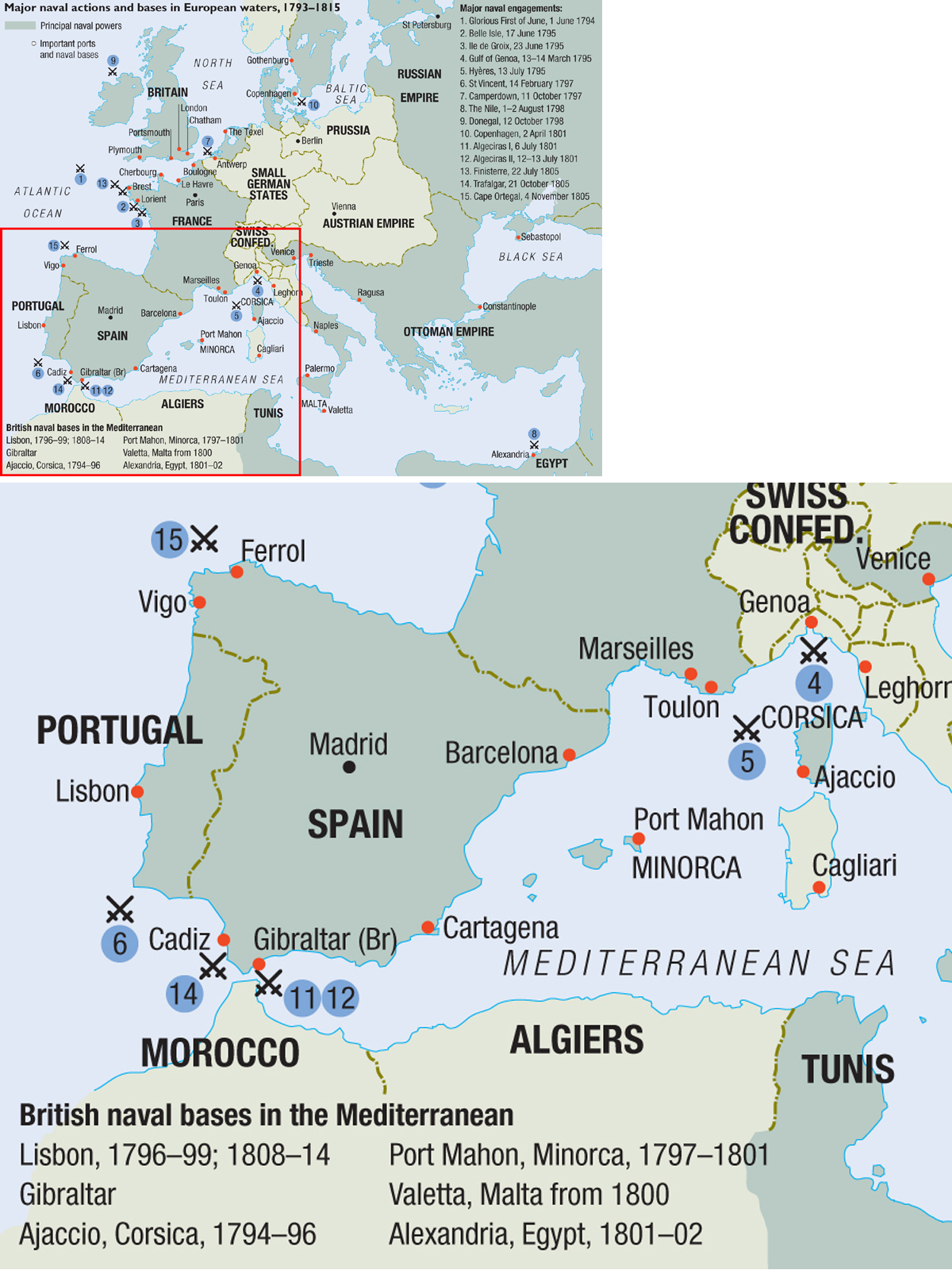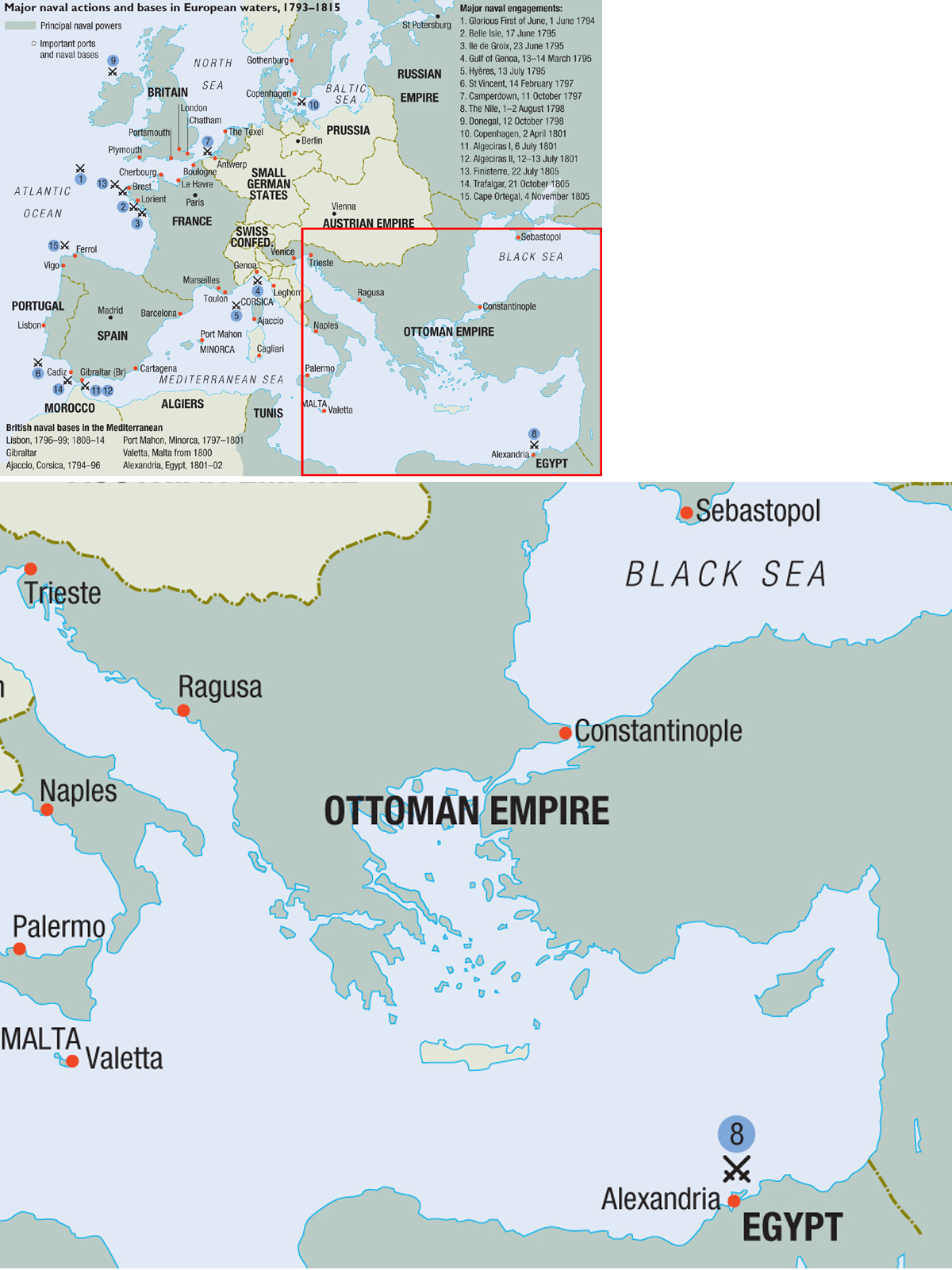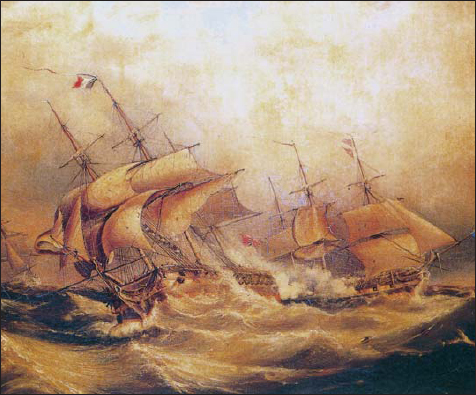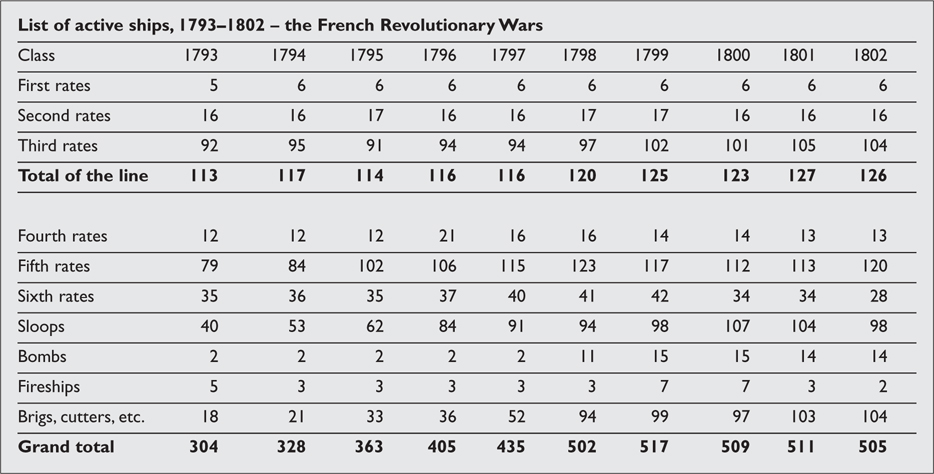Battle Orders 31
The Royal Navy 17931815
Gregory Fremont-Barnes
Consultant Editor Dr Duncan Anderson Series editors Marcus Cowper and Nikolai Bogdanovic
Contents
Introduction
During the French Revolutionary and Napoleonic Wars, fought over the course of two decades between 1793 and 1815, the Royal Navy established its reputation as one of the most effective fighting institutions in history. The Navys primary objective was to achieve and maintain naval dominance that is to say, control of the sea an aim secured as a consequence of its superiority in leadership, morale, seamanship and gunnery. Not only did the Navy play a fundamental part in the defeat of France, it periodically opposed, usually with remarkable success, her allies, Holland, Spain and Denmark, so establishing a maritime supremacy which would remain unchallenged for the next hundred years.
| Number of first to sixth rate ships at key points, 17931815 |
| 1 Jan | Type | Number | Tonnage |
| 1793 | Line | 26 | 44,116 |
| Total | 83 | 87,893 |
| 1803 | Line | 32 | 54,800 |
| Total | 116 | 131,367 |
| 1805 | Line | 83 | 148,929 |
| Total | 209 | 261,491 |
| 1815 | Line | 47 | 85,804 |
| Total | 188 | 213,472 |
Nelson boarding the San Josef at the battle of St Vincent, 14 February 1797. Acting without orders, Nelson boldly left the line and placed his 74, the Captain in the path of a group of Spanish ships seeking to flee from the action, in so doing colliding with the San Nicolas (84), which in turn crashed into the San Josef (112). Nelson immediately boarded the former and, discovering the captain had surrendered, crossed onto the deck of the San Josef, thus capturing two enemy ships in succession a feat later described as Nelsons Patent Bridge for Boarding First Rates. (Umhey Collection)
Such was the superiority of the Royal Navy that it emerged victorious in every major encounter at sea during the French Revolutionary and Napoleonic Wars. A good deal of its other roles, however, are not so easily represented by cartography, including blockade duty, the war on commerce, amphibious operations, coastal patrolling and raids, and the protection of merchantmen in convoys.
The Indefatigable (44) and Amazon (36) take on the larger, though damaged, Droits de lHomme (74), off the French coast on 1314 January 1797. Having fled from an abortive expedition to Bantry Bay on the Irish coast, the French third rate encountered the two British frigates, both on blockade duty off Brest. (Stratford Archive)
Operating throughout the oceans of the world, from the Channel, the North and Baltic Seas, to the Atlantic, the Mediterranean, the West Indies and beyond, the Navy defended Britains trade routes and contributed to the expansion and defence of her empire; prevented the enemy from making use of its colonial resources and raw materials; made possible the dispatch of expeditionary forces (as well as fleets) wherever Britain chose, especially to seize enemy colonies; and enabled Britain to protect and pursue her own interests, and those of her allies. Above all, the Navy provided the nations first line of defence against invasion.
This study examines the structure of the Royal Navy the government apparatus in London which managed it, its dockyards and bases, the organization of its crews, the manner in which their responsibilities were divided, the hierarchy of command aboard the vessels and the tasks performed by a ships company from ordinary seaman to admiral. The ships themselves are described in terms of their ratings and armament, providing insight into the capabilities of the vessels that comprised the most formidable navy of its day, together with discussion of the tactics employed in battle.
The success of the Royal Navy during this period rested on a combination of factors, not least the efficient manner in which it was organized and led. These features, together with advances in ship design, gunnery, discipline and seamanship, were the products of generations of change that enabled the Navy to reach maturity by the beginning of the 19th century.
Combat mission
The roles performed by the Royal Navy were manifold, with its primary function being the defence of the United Kingdom from invasion. It was also required to blockade enemy fleets in port so as to leave the initiative at sea in British hands. By confining the enemys principal warships to their berths, the Navy was free to harass enemy shipping and enable the Army to conquer overseas possessions, however far flung they might be. The Royal Navy was also responsible for protecting British merchant vessels plying the seas to and from the Continent, across the Atlantic to America, Canada and the West Indies, in and out of the Mediterranean as far as the Levant, and around the Cape of Good Hope to India and the East Indies. In addition, the Navy performed the general task of maintaining a permanent presence at sea, cruising for the purpose of hindering the movements of enemy warships and merchant vessels. The Navy also supported the operations of the Army, whether it was conducting short-term operations, as in the West Indies where ships were required to transport troops for the seizure of particular islands, or where fighting took place over an extended period, as during the Peninsular War (180814) when the Navy maintained communication and supply routes between Britain and Wellingtons Army in Spain and Portugal. Finally, the Navy was expected to bring the enemys main fleet to battle and there, if possible, to destroy it.
Defending the coast of southern England entailed constant patrolling, in conjunction with a vigilant watch over the Channel ports, particularly Brest. So long as the enemys main fleets could be bottled up in port their location was, self-evidently, known (whereas, of course, when at sea they could easily elude detection), even if maintaining them in place could not be absolutely assured. Like those on blockade duty, ships assigned to convoy merchant vessels often remained at sea for many months, particularly those assigned to protect trade to and from India, to which a return journey took in the order of six months. Even to North America the journey lasted four to six weeks depending on the winds and current. When conveying troops for operations overseas, the Navy cleared the path of enemy vessels and protected the transports carrying the infantry, cavalry and artillery, which necessarily composed the expeditionary force.

